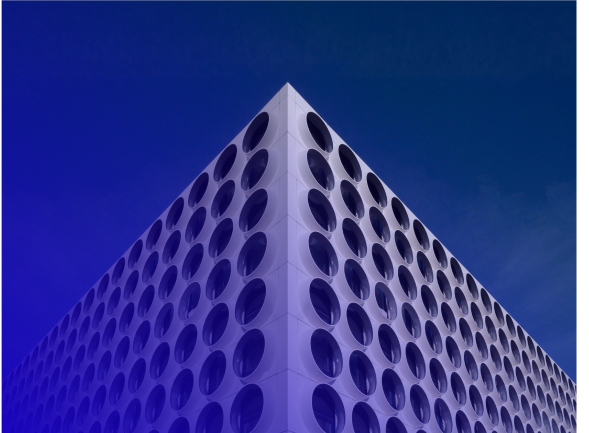How do proceedings in the Subdistrict Court work?
Each dispute, and therefore each legal action, is different. There are not only differences in the court that is competent in the first instance (the subdisctrict court or the court, and infrequently the Court of Appeal) and/or an appeal against a ruling (in the Court of Appeal) and/or appeal in cassation (in the Supreme Court), but also in the course of the proceedings. It is therefore impossible to state exactly how proceedings go, but broad outlines can be given. In the following blog Dutch litigation lawyer Thomas van Vugt explains how typical proceedings at the subdisctrict court work.
A Dutch proceeding start with summons
Normal proceedings begin with summons. This is a notification served by a bailiff in which the claiming party (sometimes himself, but usually his lawyer) explains the dispute between the parties and what he wants from the court. For example, the other party should be sentenced to do something, not do something or allow something. Most proceedings are collection cases. Therefore, most summons are for payment: the respondent is summoned to pay an amount. The claimant also has to state what actions he has taken to get the respondent to pay, what defences were submitted and why these defences are unjustified. The claimant of course has to give sufficient reasons why he thinks the respondent should be sentenced.
The first cause-list date
The summons states the date of the hearing. In proceedings on the merits this is a so-called cause-list date: a hearing (nowadays usually in writing) in which the claimant and the respondent do not have to be present, but have to take certain actions. For example, the claimant has to ‘submit’ the summons on the first cause-list date (send this to the court) and the responding party has to ‘present himself’ (report). In cases before the subdisctrict court the respondent is given a term (usually four weeks) to submit a statement of defence: the court sets a new hearing date for this. Generally, the respondent can ask for a four-week suspension once.
Defence statement
In the defence statement the respondent can state his opinion about the claim by the claimant. He will usually disagree with the claimant and explain why the claims should be dismissed. The respondent shall also give his version of the facts and circumstances in the defence statement. Sometimes the respondent shall institute a counterclaim: in that case the defence statement is also the counterclaim. A type of parallel proceedings then commence: the first proceedings are called the ‘original action’, the second proceedings the ‘counterclaim proceedings’. The original claimant (in the original action) then also becomes the respondent (in the counterclaim proceedings).
Interim ruling
After the defence statement has been received, the subdistrict court shall issue an interim ruling to determine the rest of the proceedings. The court shall often decide that there shall be a hearing where both parties have to be present: the personal appearance of the parties. The parties have to submit all dates on which they are unable to appear, after which the court shall decide the date of the personal appearance hearing. The court can also decide that there shall be a second round in writing, for the reply (claimant) and rejoinder (respondent).
Personal appearance of the parties
During the hearing of the personal appearance of the parties, the subdistrict court can ask the parties for information. This hearing is also often intended to see whether any settlement can be reached. The exact contents of the personal appearance hearing depends on the court’s interim ruling. Sometimes the lawyers of the parties have the opportunity to further explain their position (whether or not based on a written plea), but sometimes the court states explicitly that there will be no opportunity for that. After the personal appearance hearing, if no settlement has been reached, the court will again decide how the case is to proceed. If the court has sufficient information, a date shall be set for the court ruling. Sometimes a second round in writing is ordered, or the parties are given the opportunity to further substantiate certain statements.
Reply and rejoinder
If the case is in the stage of reply and (then) rejoinder, each party has one opportunity to respond in writing. The claimant reacts to the defence statement. If the respondent has instituted a counterclaim, the reply is also the defence statement in counterclaim proceedings. The respondent can then respond (one final time) with a rejoinder (and, if there is counterclaim: reply in counterclaim proceedings, to which the claimant can then respond with a rejoinder in counterclaim proceedings). New evidence can be submitted to the proceedings (exhibits), but that means that the other party can then respond with a deed (a short document in writing) to that evidence.
The parties can also request one four-week postponement for reply and rejoinder.
Ruling
After the personal appearance of the parties and/or the reply and rejoinder, the court shall usually issue its ruling. If there was no personal appearance, in principle the lawyer has the right to submit a plea: further explaining the case orally during a session. In the ruling the statements of both parties are balanced, it is considered whether the other party refuted the stated facts, or if these facts were determined otherwise. The operative part of the ruling then states the sentence of the respondent (or the claimant). The court can grant the claim of the claimant (in the original proceedings and/or in the counterclaim proceedings) fully or partially, or dismiss the claim. The court usually also orders the losing party to pay the costs.
Appeal against a ruling by the subdisctrict court
A ruling by the subdistrict court can be appealed, unless the claim in the first instance is less than €1,750. – (or if it clearly indicated that a claim that is not an immediate monetary claim will have no higher value than this amount). If there is no possibility of appeal, cassation is only possible on limited grounds. An appeal always has to be instituted by a lawyer, cassation even by a Supreme Court lawyer. In both cases the term is 3 months (but please note: a cassation summons has to include the substantial complaints against the ruling).
AMS lawyers specialized in Dutch proceedings
If you need help in a Dutch proceeding of if have any questions about Dutch law, you can contact AMS Lawyers.

